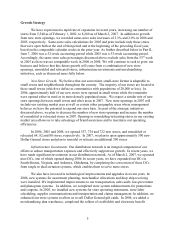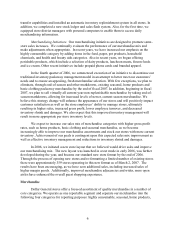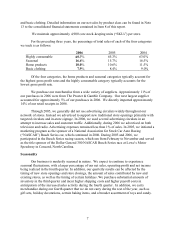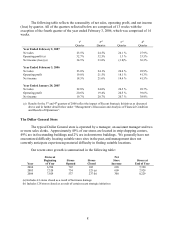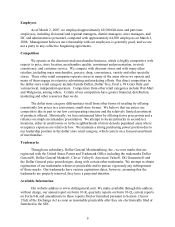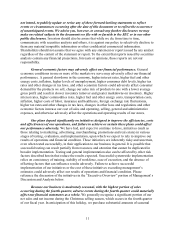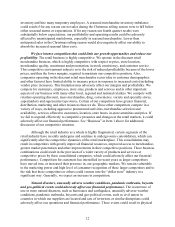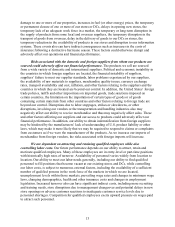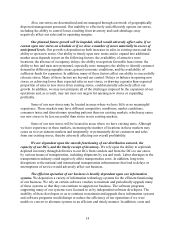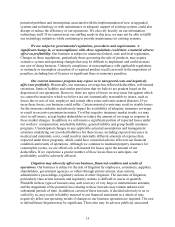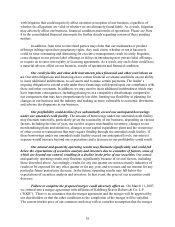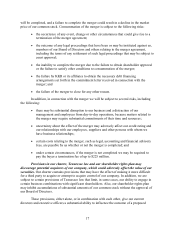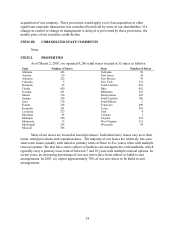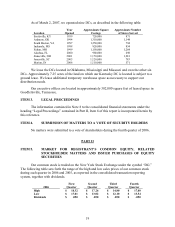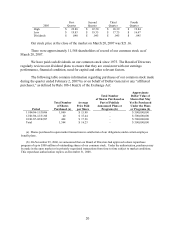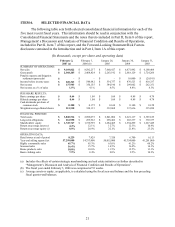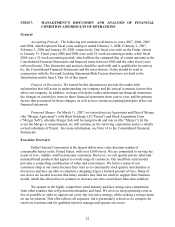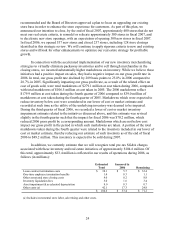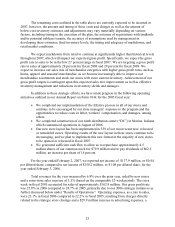Dollar General 2006 Annual Report Download - page 17
Download and view the complete annual report
Please find page 17 of the 2006 Dollar General annual report below. You can navigate through the pages in the report by either clicking on the pages listed below, or by using the keyword search tool below to find specific information within the annual report.potential problems and interruptions associated with the implementation of new or upgraded
systems and technology or with maintenance or adequate support of existing systems could also
disrupt or reduce the efficiency of our operations. We also rely heavily on our information
technology staff. If we cannot meet our staffing needs in this area, we may not be able to fulfill
our technology initiatives while continuing to provide maintenance on existing systems.
We are subject to governmental regulations, procedures and requirements. A
significant change in, or noncompliance with, these regulations could have a material adverse
effect on profitability. Our business is subject to numerous federal, state and local regulations.
Changes in these regulations, particularly those governing the sale of products, may require
extensive system and operating changes that may be difficult to implement and could increase
our cost of doing business. Untimely compliance or noncompliance with applicable regulations
or untimely or incomplete execution of a required product recall can result in the imposition of
penalties, including loss of licenses or significant fines or monetary penalties.
Our current insurance program may expose us to unexpected costs and negatively
affect our profitably. Historically, our insurance coverage has reflected deductibles, self-insured
retentions, limits of liability and similar provisions that we believe are prudent based on the
dispersion of our operations. However, there are types of losses we may incur but against which
we cannot be insured or which we believe are not economically reasonable to insure, such as
losses due to acts of war, employee and certain other crime and some natural disasters. If we
incur these losses, our business could suffer. Certain material events may result in sizable losses
for the insurance industry and adversely impact the availability of adequate insurance coverage
or result in excessive premium increases. To offset negative insurance market trends, we may
elect to self-insure, accept higher deductibles or reduce the amount of coverage in response to
these market changes. In addition, we self-insure a significant portion of expected losses under
our workers’ compensation, automobile liability, general liability and group health insurance
programs. Unanticipated changes in any applicable actuarial assumptions and management
estimates underlying our recorded liabilities for these losses, including expected increases in
medical and indemnity costs, could result in materially different amounts of expense than
expected under these programs, which could have a material adverse effect on our financial
condition and results of operations. Although we continue to maintain property insurance for
catastrophic events, we are effectively self-insured for losses up to the amount of our
deductibles. If we experience a greater number of these losses than we anticipate, our
profitability could be adversely affected.
Litigation may adversely affect our business, financial condition and results of
operations. Our business is subject to the risk of litigation by employees, consumers, suppliers,
shareholders, government agencies, or others through private actions, class actions,
administrative proceedings, regulatory actions or other litigation. The outcome of litigation,
particularly class action lawsuits and regulatory actions, is difficult to assess or quantify.
Plaintiffs in these types of lawsuits may seek recovery of very large or indeterminate amounts,
and the magnitude of the potential loss relating to these lawsuits may remain unknown for
substantial periods of time. In addition, certain of these lawsuits, if decided adversely to us or
settled by us, may result in liability material to our financial statements as a whole or may
negatively affect our operating results if changes to our business operation are required. The cost
to defend future litigation may be significant. There also may be adverse publicity associated
15


